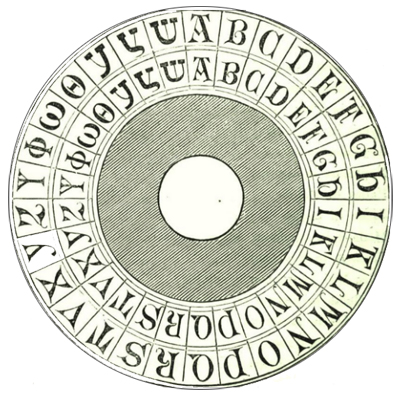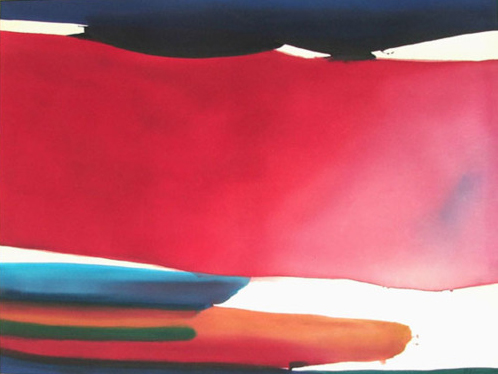This short excerpt from a sheaf of neatly typed onion-skin papers utilizes one of Kurt’s literary devices, namely the use of a “message” to “Soofi Central” to spin a tale and ramble on about essentially anything. In this case, the topic is in part about a turd too large to flush, an exercise in Scheisshumor Kurt often found irresistible. Ultimately, after invoking the spirits of Tibetan Buddhism, he navigates to a discourse on prime numbers and Pascal’s Triangle via transformations based on Middletown’s roadsign. Classic von Meier.
Cryptic Quito Camera Club
After a visit to Sacramento State University from Latin American photographer Jaime Pereira in 1988, Kurt and Jaime hatched a scheme to help aspiring photographers in Equador acquire camera equipment through the donation of used, older and broken cameras owned by Sac State students. In his usual fashion, Kurt promoted the idea creatively by creating the Cryptic Quito Camera Club. “Let's face it: cameras are expensive.,” Kurt wrote, “And those of us who appreciate good design, or who become fascinated with the delicate intricacy of precision technology, just cannot bear to throw away something like a camera. That would seem so illogical. And so it is, despite all the conditioning from the throw-away society in which we live.” This article contains Kurt’s full description of the program.
The Eternal Present and the Forty-Eight Laws of Cosmic Objectivity
Kurt’s prodigious memory was not simply an accident of nature, but also the result of his concerted efforts at memory training. As he notes in this essay circa 1979, the use of mnemonic devices to enhance memory were promoted by Giordano Bruno during the Renaissance, and the use of complex mandalas by Tibetan Buddhists serve a similar function. Kurt employed a comparable technique, which combined with his natural powers as a polymath allowed him to teach and speak extemporaneously on a variety of topics for hours at a time, without resorting to any notes.
When it comes to the exercise of memory, he states, “Any person capable of reading, understanding and following injunctions can now practice the exercise of constructing this psychic space with the disciplined imagination. Although this is a very ancient exercise, traditionally it has been a part of the esoteric teaching, distinguished from the exoteric tradition that concerns itself with outward manifestations rather than with the interior imagination. Therefore, published indications for performing the exercise, if any, have appeared in symbolic guise, as in the literature of Western alchemy.”
Sue Bitney Exhibition - Milan, 1967
Sue Bitney was a Northern California artist who’s work was generally classified as “funk”. Her work became quite popular in Europe, and Kurt von Meier contributed a commentary about her art for a 1967 catalog produced by Studio Marconi, in Milan, Italy. In his commentary, he wryly notes “In general, funky art wasn't nice. So all the nice-nice people around San Francisco who use art as a convenient commodity with which to shore up their own social and cultural pretensions tended to turn their backs. Somehow funk art just didn't look right in the marble museum halls of Mammon's minions.” A thank-you note from Sue to Kurt is included in this posting.
Four Pages from a Notebook: May 1996
Kurt’s hand filled thousands of pages of paper in his daily notebooks, a practice he maintained for at least 40 years. A combination of poems, reflections, discursive writings, doctor appointment dates, meal planning, teaching ideas and more, they documented Kurt’s daily experience of oracles and signs. These four pages from a May, 1996 lined pad are representative of his style and mode of contemplation. For the student, they are a treasure trove of scholarship and insight.
The Human Agenda Part II: A 1966 Letter to Rod
Kurt wrote letters, and kept carbon copies of them in his archive. This letter to Ron (?) is dated September 1, 1966, which is during the time Kurt was teaching at UCLA. Rod may have been a student, or perhaps a colleague, and had sent Kurt a paper about a proposed symposium entitled The Human Agenda (Part II). Kurt’s reply is generous and interesting, as he raises issues of life, psychology, relationships and art. “Which is to ask, the more we love, should we expect our psychic intimacy with work (or with art) to increase or to decrease—since psychic intimacy surely requires some expenditure of human resources, (not to mention mere time, etc.) This leads to a question of whether our capacity for psychic intimacy is in some way fixed or not—alternatively developing in the mentally more healthy individual as a total capacity, which is strengthened by its (mutually stimulating) fulfillment in any or all of the various basic human activities.”
Stars and Galaxies
This chapter from Kurt’s 350,000-word masterwork A Ball of Twine illustrates the range and depth of his knowledge, interests and humor. His analysis of Duchamp’s sculpture With Hidden Noise proceeds in a systematic yet constantly surprising way, in keeping with Kurt’s talents as a teacher and polymath. “What we can perceive, measure, and record of such micro- and macrocosmic events must be integrated into human consciousness no less so (but neither with any greater imperative) than our perceptions of theater, music, flower arranging, or any of the other arts. Any one of these "soft" activities undertaken by an accomplished practitioner may illustrate--in the end, with the same order of legitimacy as for any of the "hard" sciences--those underlying laws governing all formal interactions and thus determining (besides helping us to describe or explain) why things are the way they are.”
A K von Meier Mind Map
A unique find among Kurt’s archives was a very large sheet of paper, folded into 16ths like a map, entitled TWINE. In keeping with his interest in Marcel Duchamp, upon this sheet Kurt mapped a series of links and associations tied to Duchamp and a number of his most notable works of art. This combination of abbreviations, authors’ names, books, art history, and cultural references — in addition to providing a thread pertaining to Duchamp — also provides a view into Kurt’s mind, and his map-like way of seeing connections and organizing his thinking. Enlarged sections of this “map” are provided on the following page.
The OMASTERS - Shakuhachi Unzen
Omasters, Kurt’s one-of-a-kind, unpublished work of fiction, consisted of tales taking place in three different realms, all connected by threads of narrative and various characters appearing through transformations within each realm. One such realm was the Teahouse of Necessity, bearing an uncanny resemblance to the Diamond Sufi Ranch (aka Samten Chuling). This segment features Shakuhachi Unzen, “dishwasher, flunky and garbage man.” He waits upon the meeting of a group of remarkable men. Kurt writes:
“Shakuhachi poured the milk of compassion into the pot on the hot stove, ground cardamom seeds, stirred in Lyle's Golden Syrup; like hopiscotch he covered a pattern over the kitchen floor worn smooth with retracing, the principle of design utilized by Harrison and Abramowitz for laying out paths at Brandeis University...”
One guest is Melvin Finnis, designated to lead meditation at the Teahouse. “Shakuhachi's technique with Melvin was to ask him questions which would conventionally, politely, require an answer of "No." He knew Melvin as practitioner of Perfection would be reluctant to utter "negative" thoughts, being at the rather literal level of the path. Melvin's left eye lid tic’ed whenever a NOT twisted his line of logical reasoning.”
What transpires is a unique game among the Teahouse denizens, a memory game filled with puns, quotations, arcane bits of information, integer sequences, chai, and fine cuisine.
Jewel, Joke and Juggernaut
Here is another selection from Kurt’s magnum opus “A Ball of Twine”.
“The merchants, as a class in traditional China, were typically ranked at the bottom of the social ladder: middle men, schleppers, people who performed a derivative function, something that does NOT belong to a primary order of reality. For, although the Great Spirit is One and abides in all things, and in the dance that all things do, ordinary human beings come to know It best through primary expressions of art (including architecture, music, poetry, calligraphy, theater), through plants (from gathering to farm and garden), through animals (from the primordial rite of hunting to the companionship of pets), and through the regenerative mystery of a baby newly-born. Aesthetics relates to the ways in which we structure material stuff to articulate the spaces and durations, recreating expressions of the Great Spirit: naturally emanating from orders of aware consciousness. Money--unless it is a beautiful coin by Pisanello or a Check by Duchamp--does not.”
GTO
Though the dangers of burning of fossil fuel receives considerable attention today (2018), in 1974 the very wisest among society were already ringing the alarm bell and advocating alternative energy sources. Kurt von Meier knew that “Lady California, bound and raped” was not the way, and he penned this short, poetic contemplation about harnessing geothermal energy. Not alone in his concerns, his voice and the voices of other visionaries were drowned-out by yet another in a series of global oil booms, a suicidal activity which continues today. GTO, whatever it meant to Kurt, was the designation of a gas-guzzling sports car sold by Pontiac.
The OMASTERS - Television Series
Kurt von Meier’s and Clifford (Walter) Barney’s Omasters consumed years of writing and reams of paper. Though never published (except in part, on this website) in final form, or for that matter, completed, the project was a source of energy and amusement—the embodiment of G. Spencer Brown’s Laws of Form and a lifetime of studying art, mythology, mathematics, and mystical traditions.
It also generated spin-off material for a television series: a story summary, an unfinished synopsis of episodes and scenes about its lead character, Matt Welles, and even a snippet of a screenplay. Yet another peek through von Meier’s magical looking glass, one can only imagine the world in which this television series would be broadcast.
The Artists of New Zealand - 1963
Kurt’s time teaching in at the Elam School of Fine Arts in New Zealand was a mixed experience. On the one hand he enjoyed a measure of celebrity as an American art historian, but on the other, New Zealand’s cultural scene in the early 1960s was not terribly appealing. In this lengthy article, he writes, “New Zealanders prefer to import most of their cultural pretensions tinned or pickled, ready to serve, and the feast on a season's fare courts an aesthetic ulcer annihilating all future appetite...the popular level of aesthetic taste ascends to the heights reached by Sunday school pictures or gazelles sand-blasted in the front door glass.”
Nonetheless, Kurt established relationships with the island’s young, upcoming artists (and today, accomplished), and found plenty to enjoy: “In contrast to this, however, are the bright prospects of a new movement in the fine arts. Its youth and impertinence both serve as motivating forces and protective devices.” An opportunity to hone his skills in writing art criticism, this essay presages his later work for Art International and Artforum magazines.
UCLA Lecture 1967 - Renaissance to the Present
A 1967 lecture that begins as a very straightforward art history lecture about the Renaissance turns to Kurt’s concerns about teaching art history itself, and reflects upon the crisis in his own teaching career. His UCLA teaching contract terminated due to his controversial and unconventional teaching style and views about education, he reflects upon his aspirations as a teacher and intellectual. Remarking on the absurdity of it all for his students, he says, “But you do become absurd. You lose your sense of joy and discovery, humanity, you act and respond like machines. I know you do. I know because I know these forces on my life too, essentially the same forces.” And, facing the career crisis in his own life, he remarks, “Every time we reach that ultimate point in states of consciousness, we're in a critical situation; we can choose. Crisis, crossroads; take your choice which way you gonna go? Forward, backwards, left or right. Crisis mean crux, cross, crosswalks, crucial; every time you can choose you're free. Every time you do choose, you affirm your freedom. Every time you affirm your freedom, you affirm life.” Both informative and revealing, this lecture is available as both audio file and transcript.
Gestalt Mathematics
“The contribution of the Gestalt approach is the recognition that figure and ground are formally the same and may be exchanged without violence to the whole, and in fact must be changed for a complete experience of the whole. When we understand something, we stand under it, experience it from without as well as within.” So states Kurt von Meier and Clifford Barney at the beginning of this 1975 exploration into the relationships between the Gestalt therapy and psychology of Fritz Perls, mathematics, and knowledge of the divine as seen by Dante Alighieri.
Carlos the Horse-fly or Carlos the Bull-fly
A visit to Kurt’s sister Kathie yielded this story written by Kurt when he was in seventh grade in Carmel, CA, and published in the Carmel Pine Cone newspaper. Kurt was very athletic but among his peers, a bit short of stature; accordingly, this story about a small horse-fly that accomplishes a grand task reflects Kurt’s desire for greatness and glory, desire that later fueled both his academic and social ambitions.
WANG DU (dBan gDus)
Kurt penned this short contemplation in July, 1972, on his Birthday while at Karma Dzong in Colorado, reflecting upon his Tibetan Buddhist name, it’s connection to the great Tibetan sage Tilopa (The Fisherman) and his father Julian “the great fisherman” (photo above, to the right of Kurt in overalls in 1938). He sees the reflection of his father in his own photo with his own fish, a Mahi Mahi (Dolphin fish) caught in Mexico in the Sea of Cortez.
New Shoes
Here is another chunk of Kurt’s daily thoughts and reflections. Created in January of 1976, it contains references to a CBS news report, etymology of various words, a slew of mental and linguistic associations, snippets of poetry, classical references, allusions to pop culture, and the tears of Maine Senator Edmund Muskie. “Noah must count the species named by Adam by twos if they have become sexually distinguished. The algae, in the form of one-celled being, may presumably enter upon acknowledgment of single booking.”
Kurt Gets Interviewed in 1967
This recording of Kurt von Meier being interviewed by a woman named Kris Koch sometime around 1967 was made while Kurt was still teaching at UCLA and had become a wildly-popular professor. Ninety-nine percent of the interview is Kurt rapidly talking a blue-streak, delivering a wide-ranging discourse about his interests in the wisdom of “primitive” people and cultures, and the ways “western civilization doesn’t work for people well at all.” His comments range among art history and world ecology; presciently for 1967, he raises the prospect of the greenhouse effect, climate change, rising oceans and the possible death of planet Earth. His comments convey why Kurt was so popular and controversial. A poor microphone produces some clicks and sustained “hum” as the interview progresses, but his comments remain easily heard. At some point, a phone rings, he checks the mike, and sadly, the interview comes to an abrupt end after 38 minutes.
Letter to James Keys (G. Spencer Brown)
Having received a letter during October, 1976, from James Keys (aka G. Spencer Brown, author of Laws of Form) in which Keys suggests he plans to move to California to take up residence, Kurt sent Keys a letter inviting him to the Diamond Sufi Ranch in Napa Valley. After noting the beauty and amenities of the area, Kurt goes on to describe his current work and interests. "I understand Laws of Form as the mathematical basis for the practical work of translating the teaching of the Dharma as preserved by the Vajrayana tradition of Buddhism, and based upon the Heart Sutra (Prajnaparamita Hridya Sutra)....Curious though, some of my questions about mathematics have led to citations from manuscripts apparently concerned with prediction and prognostication, said to be virtually unreadable or unintelligible save for the very few exceptional people. Sounds rather like the response of my students to Laws of Form."






































